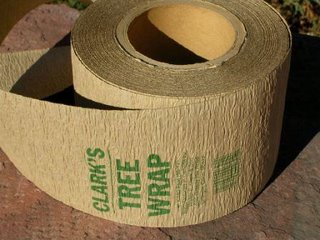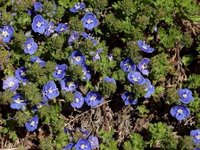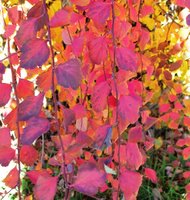
We awoke this morning in beautiful Wheat Ridge, Colorado, to our coldest temperatures of the season---a cool 7.6 F! But the snowstorm had cleared out and left a beautiful blue sky. The white blanket of snow that was left behind has such a calming affect; everything seems clean and quiet and relaxed (as long as you aren't out there driving on the icy roads, that is!). My neighborhood consists of little brick ranch style houses built in the early 50's. In the wintertime, when snow is all around and the sun is low, it looks like a vintage Christmas card to me, and I love it.
Weekend Fun

What a great holiday weekend! I got to visit with several friends that I don't see nearly enough, spend time with my family, and, yes, even get in some holiday shopping!
My daughter and I had a fun outing on Saturday: a "photo safari" to Echter's Garden Center. We each took our digital cameras and meandered through the store taking pictures of flowers and holiday decor. They even have an area set up specifically for use as a family photo backdrop! As amateurs working in low light (it was late afternoon) and without tripods, we got our share of blurry images. All of those little fairy lights and sales tags were a challenge, too!
This photo of an orchid was one of my successes.
Turkey Fry

Well, I was all set to create a pictorial posting of our annual Thanksgiving turkey fry, but I only got one photo before I got caught up in all of the activity! We use about three gallons of oil in our frier, which we set way out on the edge of our driveway, away from the house. We also take the precaution of setting it on a piece of drywall, which absorbs the oil mess and is relatively non-flammable.
The real fun happens when our friends stop by to have their turkeys fried. We nibble on snacks (which our guests contribute as the "price of admission"!) and visit until their turkey is done cooking (about 45 minutes for a 12 lb bird), and then they're off and the next group arrives. It's a revolving door of food and fun! Our own turkey is the last one in the pot, late in the afternoon, and then we settle in for a quiet family dinner.
Get 'er Done!

Need a light chore to help you work off your turkey feast? If you haven't done so already, then get out there and wrap your trees. Young trees that haven't yet developed their "corky" or mature bark are very susceptible to winter sun scald. The lack of foliage, low angle of the sun, and reflection off of snowy ground all contribute to damage tree trunks. This is a particular concern at our altitude, of course, and young honeylocusts and maples are especially at risk.
So here are a few tips:
Use a product made for this task---see photo. It's not expensive, and it can be reused.
Start at the base of the tree and wrap in an overlapping spiral (to shed moisture, like a shingle)up to the second tier of branches.
Secure the ends of the wrap to itself (not the tree) with duct tape, a small office type clamp, or staples.
Apply at Thanksgiving, remove at Easter.
Fall Fandango

I am still enjoying the Fall foliage, even though most of it is on the ground now. I move piles around from here to there, using them as a loose, light mulch. The artwork, pictured above, was inspired by the idea of layers of fallen leaves and their dancing journey to the ground.
To see more of my fiber art, please visit my website.
My Favorite Tree

This photograph, taken about a week ago, is of my favorite tree, an apricot. It doesn't have a great shape---too much storm damage and amateur pruning over the years--- nor does it provide a great fruit crop---too many late spring freezes. But it does have a lot of sentimental value.
About 18 years ago my daughter and I took a "girls only" drive down to southwestern Colorado to visit my mother and grandmother. My grandmother had a fabulous garden - everything from perennials to numerous fruit trees (apricots in particular) and vegetables. She gardened on about 3/4 of an acre in a small rural town and she loved to experiment. Although she'd had a career in high fashion, she had since become a town character with her hair always done up in an enormous French twist and her daily gardening uniform of blue Lee overalls and canvas Keds sneakers. Anyway, this particular visit was in early Spring, and my grandmother convinced me that I had to take home one of her apricot tree seedlings. She had a habit of tossing her fruit pits out the back kitchen door and into her rose garden for the birds and squirrels to eat. Ocasionally, some of those seeds actually germinated and grew, and she would give them to friends or transplant them to other locations on her property. I decided that a 4 foot whip could easily fit in the back seat of my little Mazda, so why not? Wanting to impress my grandmother, I quickly balled and burlapped (or sheeted, more precisely) the little tree---the only time, before or since, that I've actually done that!
Well, as the photo shows, Grandmother's apricot has done quite well here. It remains a joy to behold throughout the seasons, and is a wonderful reminder of one of my all time favorite people.
Please share the stories of your favorite plants here, too.
Anticipation...

...can be a negative thing or a positive thing. Case in point: The 200 tulip bulbs that I ordered last summer arrived last week. I had ordered them, somewhat on impulse, in the hope that I would feel compelled to plant them once they were sitting on my doorstep (I am often "too busy" to shop for, much less plant, bulbs in the fall and always regret it in the spring). Well, I was bemoaning my fate---this "horrible" planting chore---for several days. I knew that I would have to do it Saturday before the cold and wet weather hit us on Sunday. Lo and behold, I had an absolutely delightful afternoon planting those silly bulbs!! The day was fresh and warm, and the soil moisture content was perfect for easy digging. I got into that peaceful zone that only gardeners can know. All of that wasted energy spent on negative anticipation has now flipped---I am so looking forward to my new crop of tulips next spring!
Lesson learned? Get out there - in the garden - and get transformed.
Winter Watering Tips

This info is just slightly dated, but great advise nonetheless. It was adapted from "Front Range 2006 Precipitation," by Carl Wilson, Denver County Cooperative Extension, The Green Scene Newsletter (October 2006):
September was the eleventh month in a row with below normal precipitation in Denver and ended with precipitation for the year at 7.15 inches below normal, according to the National Weather Service. Normal precipitation through September is 13.21 inches.
What does this mean for plants?
- Plant roots require moisture throughout the growing season and in the case of perennials and woody plants, throughout the year. Don't be thrown off by local precipitation rates that may imply adequate moisture when totals may have been inflated by single events.
- Dig down and check that adequate moisture is present throughout the soil profile to an 8-12 inch depth.
- If moisture is not found, water the plants.
- Make sure that woody plants in particular enter the winter months with adequate moisture and that as winter progresses, plants are monitored and watered as needed.
- Pay special attention to recently installed plants and evergreens.
'Prairie Sky' switch grass (Panicum virgatum 'Prairie Sky')
Don't do That

In yesterday's post extolling the virtues of late fall foliage I showed a photo of a Vanhoutte spirea. This is a lovely example of an arching, or fountain shaped, plant form. This plant form needs plenty of space to show off, and is ideally placed as a single specimen. However, just don't plant it in the lawn as my photo showed! Why? Well, not only is it a maintenance nightmare having to mow and/or trim around the base of the plant, but you also risk damaging it as a result. A better idea? Create a planting bed and combine the spirea - or any plant with an arching form - with a very low groundcover. This will show the shrub to its' best advantage and allow for easier maintenance.
What would I combine with a Vanhoutte spirea? How about creeping wooly speedwell (Veronica pectinata), shown here. It's drought tolerant - like this particular spirea - has small blue flowers in early summer, and is often evergreen (purple-ish grey) in the winter. Voila', a much better solution!
Treat Yourself
Would you like to be notified via e-mail whenever I create a new post here? Then just click on the "subscribe" button on the right to get set up. Let your friends know, too, about my newly improved, user friendly blog --- and thanks for reading!
Still in Leaf!


Prior to our recent high winds there were a number of deciduous woody plants throughout my neighborhood that were still holding on to their foliage---most of them sporting their peak autumn color. Some of these shrubs include burning bush (Euonymus alatus), Vanhoutte-or bridal veil- spirea (Spiraea x vanhouttei) shown here, St. Johnswort (Hypericum), Gro-Low Sumac (Rhus aromatica 'Gro-Low') and many roses (Rosa sp). Ornamental pear trees (Pyrus calleryana) are now in their prime with wonderful red foliage, and my apricot tree (Prunus) was cloaked in gold.
So if you want extended foliage color and texture deep into the fall you might consider adding some of the above mentioned plants to your landscape. In fact, most of these plants are pretty resilient to damage from the early, heavy wet snows that we can sometimes get (with the exception, perhaps, of the pear trees).
Photos taken today show Vanhoutte spirea.
Upcoming Classes and Events
A heads up for those of you who might be interested in learning more about landscape design and/or landscape renovation with a focus on saving water. I will be teaching several classes early next year at Denver Botanic Gardens and I encourage you to register soon either on-line or by phone at 720-865-3580, as classes fill quickly. Click on the links for more info and/or registration for specific events.
The first class, Landscape Design Theory, is on January 13 (Sat), from 9am-4pm. This is an all day lecture that includes a review of historical and contemporary design styles, the elements and principles of artistic design and how they relate specifically to the garden, and the design process used by professionals.
Also on January 13, DBG will have their kick-off for the series of water- smart lectures that they are doing in conjunction with Denver Water. David Salman of Santa Fe Greenhouses will be the guest speaker and there will be tables staffed with industry pros that can answer your questions about plants, irrigation, etc. You will also be able to register for and schedule a future consultation with a landscape designer --- another program that I am involved with!
On February 3, as part of the above mentioned water-smart series, I will be giving a lecture from 10am-noon on renovating your existing landscape to make it more water efficient.
Finally, Lush Landscapes with Less Lawn will be coming on April 7, 9am-noon. This one is not in the catalog yet, but I'll keep you posted.
I hope you can join me for one or more of these events. I really enjoy teaching and public speaking, and my classes are fun and informative---if I do say so myself!!






